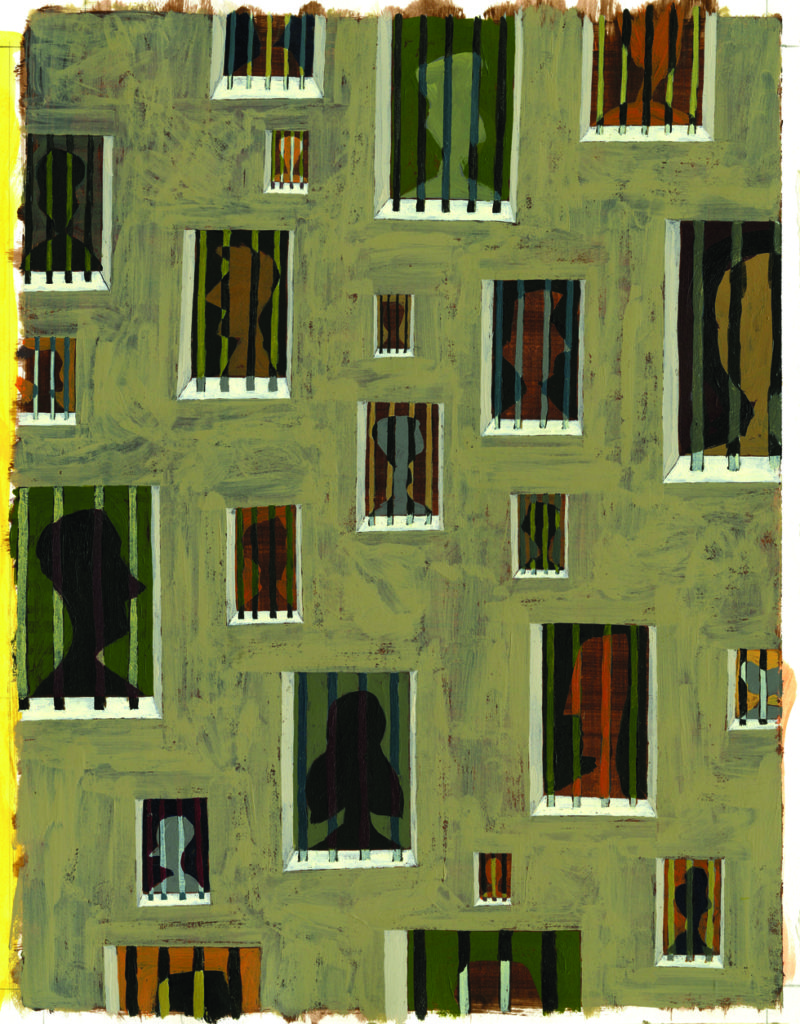A Reading Group Explores Race and Criminal Justice

Ashley Williams, JD ’16, was shopping with friends in New York last August when she heard about another shooting of an unarmed black man—this time, Michael Brown in Ferguson, Missouri. As co-president of Stanford’s Black Law Students Association (BLSA), Williams wanted to make sure that she was ready for not just the beginning of classes when she returned to Stanford Law in September, but also for action.
“We were scattered across the country, but I was in close touch with members of BLSA—mostly talking about social functions we needed to be ready for when school started,” Williams recalls. “We quickly came together to write a letter to the SLS administration to let them know how disturbed we were about this latest killing and to ask for help in bringing racial justice issues more clearly into our legal education.”
The importance of race in law in the U.S. is inescapable, so it must be a focus of legal education, Williams says. “People look to lawyers to explain the criminal justice system and why it fails. We may not have all the answers but we’re in an excellent position to think more critically about it, particularly now while we are studying the law.”
Faculty members at Stanford Law were also thinking about how best to respond to what seemed like an epidemic of police shootings of black men and boys, with several panel discussions and courses planned. David Alan Sklansky, the Stanley Morrison Professor of Law, had several ideas. A criminal justice expert who joined the faculty from Berkeley Law in 2014, he had seen issues of race and criminal justice up close as a federal prosecutor in Los Angeles early in his career, and again when he served as special counsel to the independent review panel appointed to investigate the Los Angeles Police Department’s Rampart Division scandal.
“I’ve spent my career thinking about criminal justice, and much of that time I’ve been looking at race, because in the U.S. the two are very tightly intertwined,” says Sklansky. “Along with other people at SLS, I was looking for ways to respond to the renewed interest, across the country and among our students, in police violence directed at young men of color. I wanted to help give our students ways to grapple with that issue.”
Sklansky floated the idea of a reading group to Williams, who was in his Evidence class in the winter quarter. She agreed to be a student facilitator, inviting Amari Hammonds, JD ’17, to join her. And so in January the SLS Reading Group on Race and Criminal Justice was launched. The informal, noncredit reading group has proven popular, with about 30 students attending each bimonthly meeting where they spend an evening discussing tough issues.
Sklansky also co-taught a one-unit course on race, policing, and prosecutors over the winter quarter with Professors Ralph Richard Banks, Norman Spaulding, and Jennifer Eberhardt. And he is currently co-teaching a new policy practicum with Deborah Mukamal, executive director of the Stanford Criminal Justice Center, on the race and gender demographics of prosecutors. But he likes the informal structure of the reading group, because it allows students to participate to the extent that their schedules allow. “But of course the students show up fully prepared, having done the reading and thought hard about it,” he adds.
The informality of the reading group was important for Hammonds, who wanted to respond to events but didn’t have time for another credited course. “It was frustrating for me to be so busy, but that’s the reality of the first year of law school,” she says. “Making this a credited course would have changed the dynamics.”
Sklansky took a back seat, encouraging Williams and Hammonds to lead each meeting and to choose the readings, which have included the DOJ’s report on the Ferguson police department and Jill Leovy’s book, Ghettoside: A True Story of Murder in America. But Sklansky’s presence was appreciated all the same.
“He does downplay his role as well as how excited the students are about his involvement,” says Hammonds, who took Criminal Law with Sklansky in the fall. “Students love him, and they feel privileged to spend an evening discussing important issues with him over dinner. And he’s so invested in the topic.”
The three are glad that this topic has been taken up by a broad spectrum of the Stanford Law community. In fact, a majority of the students in the reading group are white. “That feels really nice to me, surprising in a nice way,” says Hammonds, who grew up in St. Louis and knows people from North St. Louis communities like Ferguson. But for her, racial justice is very personal. “I’ve known people who have been murdered, relatives who have been in jail, people who have been subjected to domestic abuse. So there’s a lot at stake for me,” she says.
With interest in the topic strong, the group is expected to continue next year. SL
